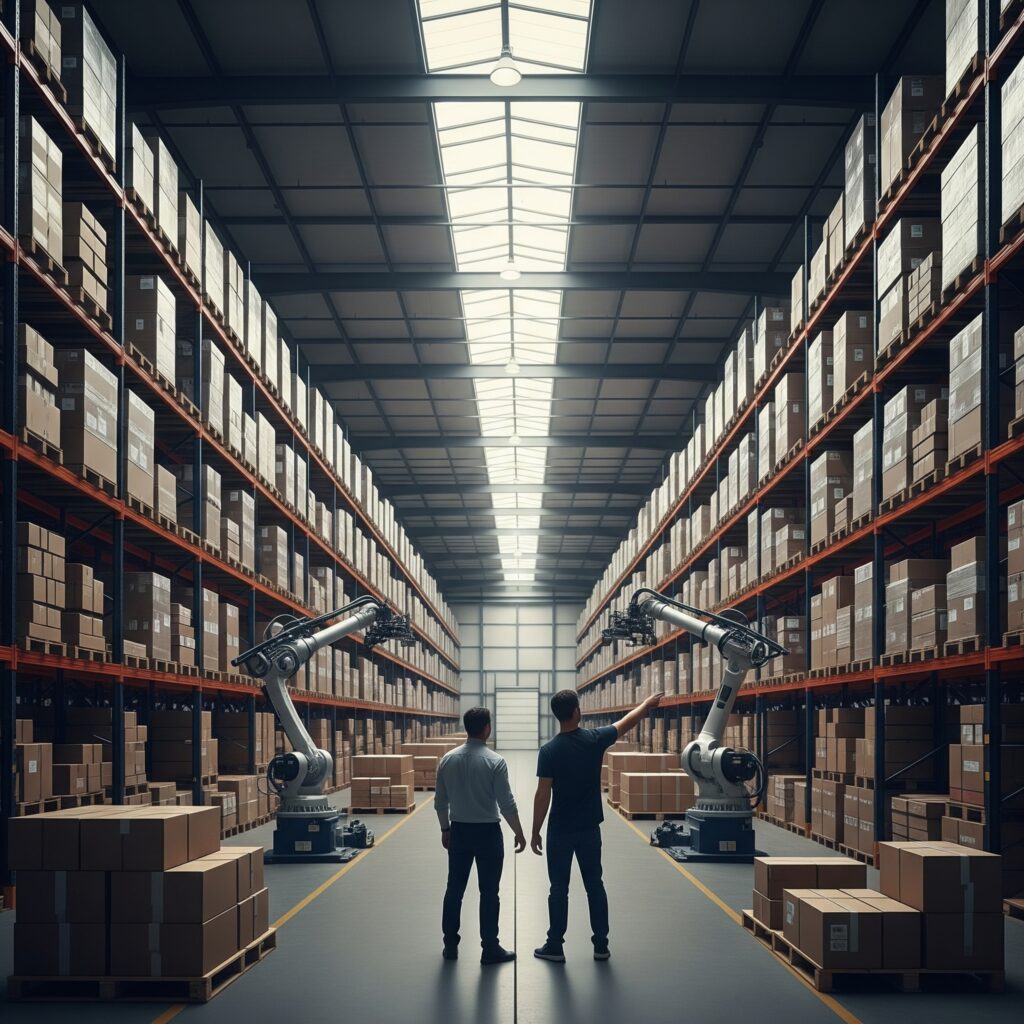
Meet our Expert
Kahane grew up in Israel and studied at Ben Gurion University, where he earned his BSc and MSc in electrical engineering. He started out in the semiconductor industry and became interested in sensors, which led to his fascination with the team building the DeepMind project in London. That evolving interest in AI connected him with Derik Pridmore, with whom he co-founded OSARO in 2015. As CTO of OSARO, he leads the development of algorithms, robot integrations, and both cloud and on-premise infrastructure. He also works closely with customers to help optimize the performance of robotic solutions.
Investment in Robotics is a Strategic Imperative
By Michael Kahane, OSARO Chief Technology Officer
With a recession looming and the fear that consumers may slow spending, supply-chain leaders may wonder if they should pull back on their investments in automation. That’s not a good idea.
Until 2020, online purchasing was growing rapidly. Then came the pandemic, and it exploded. Today, orders are overwhelming distribution facilities, labor is near impossible to find or keep and customers expect next-day delivery.
All these factors are driving the need for expanded, faster fulfillment. All these factors are driving the need for expanded, faster fulfillment. Global warehouse capacity is expected to increase from 28 billion square feet in 2020 to nearly 38 billion in 2025, according to data research firm Interact Analysis. The firm also found that investment in warehouse automation is expected to balloon from $29 billion (2020) to $67 billion in 2025.
Recently, robots have gotten a lot smarter. This is something managers from the warehouse floor to the C-suite need to understand because robots can address the rapid changes, disruptions and other challenges the supply chain is experiencing—regardless of whether the economy goes boom or bust.
Access to cheap cloud computing and storage has changed the cost equation for robotics, accelerating advances in artificial intelligence (AI) and machine learning that enable robots to take on complex new tasks while continuously learning and improving. These new robots are not just programmed to shuttle bins up and down walkways or conveyors; they make decisions. They leverage superior vision and perception software, along with cheaper, sophisticated cameras and sensors that allow a robot to see, perceive, grasp, pick up and place an object.
An intelligent robot can identify and pick items from a jumbled pile of different products. Each object may have a different shape, weight and dimension. It may be smooth or crinkled, plastic or metallic, round, square or pouch-like. The robot can determine how to pick it up. It can then scan it and, when integrated with other technologies in the warehouse, label it, bag it, sort it or send it downstream on a conveyor. Robots can also now depalletize and decant—that is, unpack boxes on giant pallets.
These are among the capabilities that allow certain robots to take on roles that, until now, have been managed only by humans. In the automation industry, this is called the goods-to-robot (GTR) segment of warehouse automation, and it’s a crucial area where the greatest advances in efficiency can be achieved.
Factor in today’s labor shortage
Another contemporary headline: Fulfillment operators are experiencing a critical labor shortage. The June unemployment rate was 3.6%, one of the lowest rates ever seen. On top of that, warehouse picking and sorting jobs are boring, dirty and dangerous, so it’s hardly surprising that workers are not lining up for these jobs.
Fifty-four percent of logistics operators said hiring and retaining qualified workers was a top challenge, second only to product shortages, according to a 2022 Material Handling Industry (MHI) association survey. And a recent internal report leaked from Amazon warned that the company could run out of people to hire for its vast warehouse operations by 2024.
Can robots backfill these positions? Yes. Smart robots can match most human capabilities in a busy warehouse—and work multiple back-to-back shifts. While some industry observers raise the specter of robots “taking” manual jobs, my view is that these robots will, in fact, create better jobs for warehouse workers. As robots proliferate, they will require better-trained, better-paid humans to maintain them, clear occasional jams, monitor performance and set schedules.
Investment as a strategic imperative
Making the business case for the adoption of technologies to optimize the supply chain has never been more important. MHI’s 2022 annual report, “Evolution to Revolution,” warned that automation technology will be a crucial turning point between operational success and failure in the foreseeable future.
The good news is that the case for investing in automation has gotten easier. Most robotics automation companies are moving toward robot-as-a-service (RaaS) contracts, which shift the expense to operational costs to eliminate expensive upfront capital investment. The increasing practice of upfront feasibility studies that ensure systems will work at expected performance levels also reduces the risk of committing to robotic integrations.
That said, robotic automation is complex. Here are some key steps to consider while ramping up to reduce your risk.
• Articulate the goal. Seek clear internal agreement on the problem you want to solve so you can identify vendors with the right capabilities. Include the C-suite as well as floor operators in the discussion and decisions.
• Assess. Your vendor should conduct an upfront feasibility study to determine the best options for your existing or greenfield setup. Look for a vendor whose representative has e-commerce fulfillment industry experience.
• Upskill your employees. Invest in training for your current staff so they can assume new roles that will come with robotic automation—this will also minimize turnover.
• Ensure support. Make sure your vendor is there to support you before and after the sale. They should have a well-defined and documented process for project implementation and follow-up support to keep it running optimally after installation.
• Consider lower-risk business plans. RaaS contracts can be less risky than costly upfront capital investment.
• Measure success. There are generally five things to consider when evaluating these projects: sales and revenue, productivity (such as pick-to-ship cycle time), quality (such as lower error and damage rates), safety compliance and profitability.
In MHI’s survey cited above, the association found that 28% of those polled were already using robotics and automation, while an overwhelming 78% expected to adopt such technology over the next five years. If you manage logistics, bringing goods-to-robot automation into your fulfillment operations is not just an optional plan; it’s a strategic imperative for long-term survival.
This article was first published by Forbes Technology Council, August 25, 2022.





